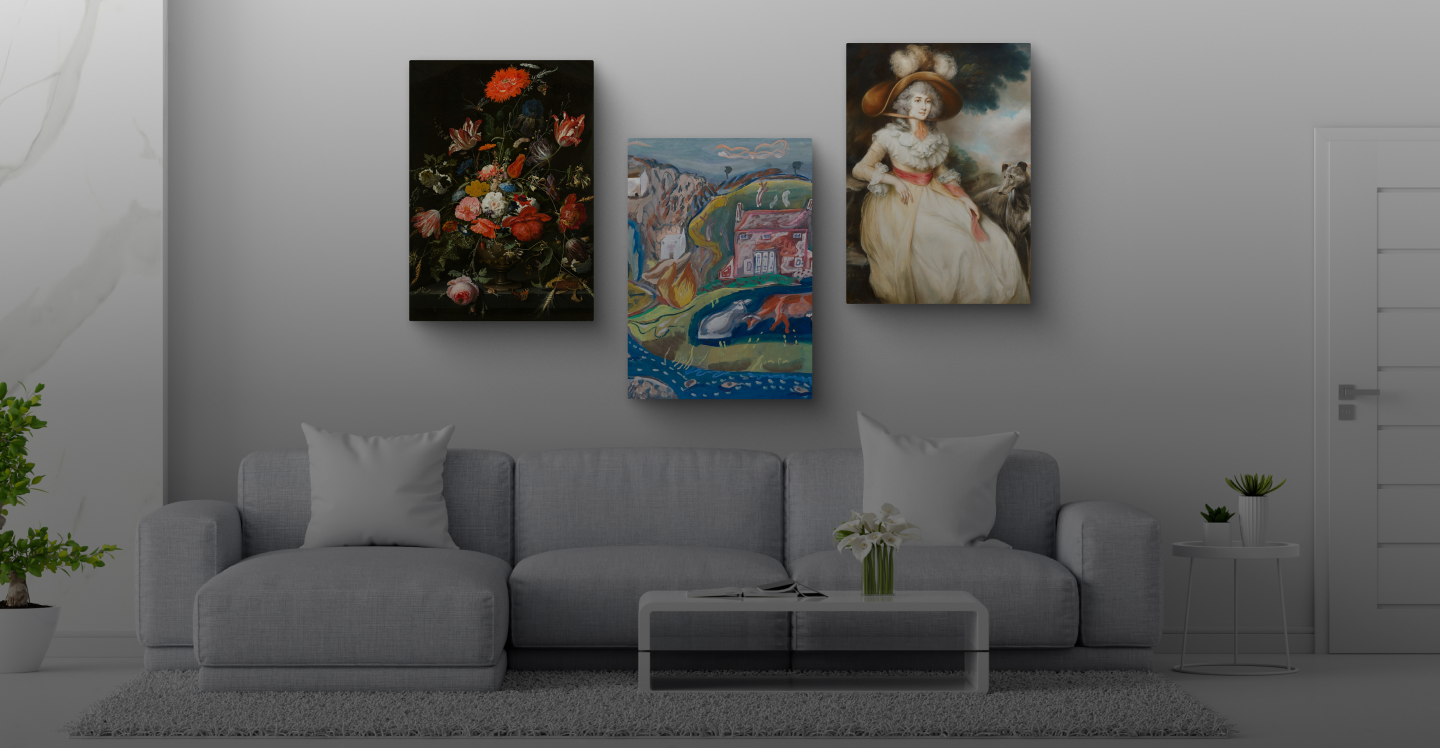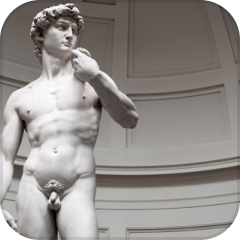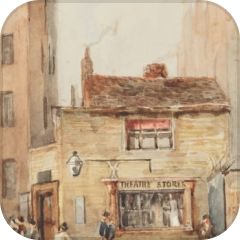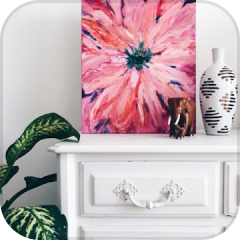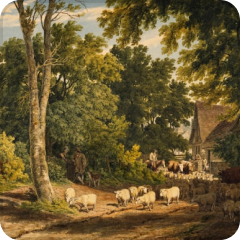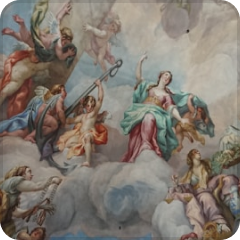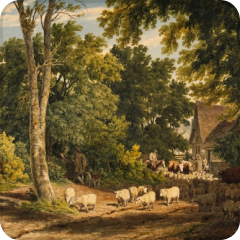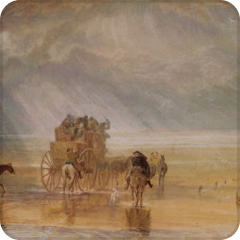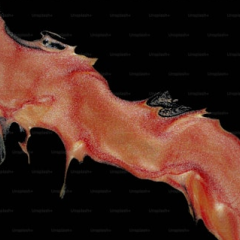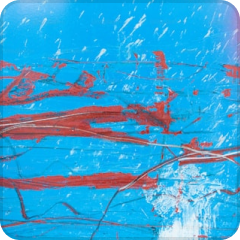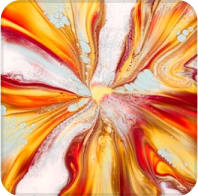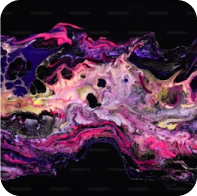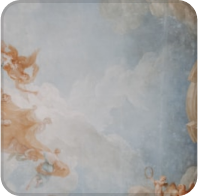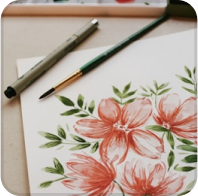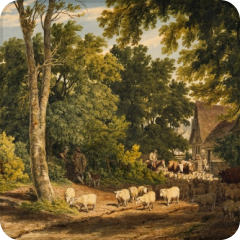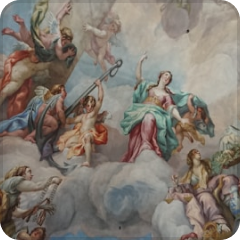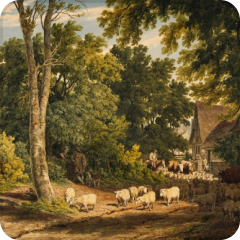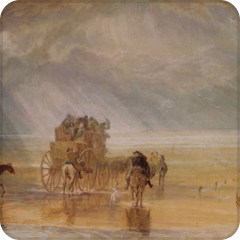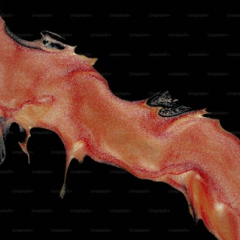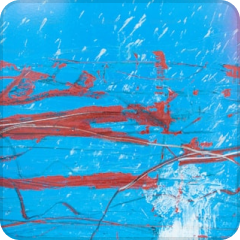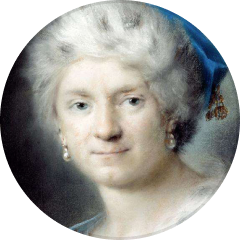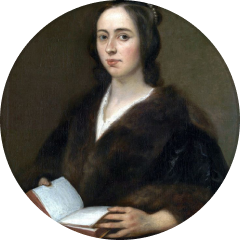





Top Categories
Transform Your Space with Personalized Art Prints
Bring your walls to life with premium, customizable canvas prints. Whether it’s your favorite memories or inspiring art, Zebaco makes it easy to create beautiful, durable pieces that reflect your style.

High-Quality Prints

Affordable Custom Art

100% Satisfaction
What’s On Sale
What Our Customers are Saying


Oliver Stone
"I recently purchased a stunning canvas from Zebaco, and I couldn't be happier with my choice! The vibrant colors and exquisite detail have truly transformed my living room. “


Amelia Rivers
"I recently purchased a stunning canvas from Zebaco, and I couldn't be happier with my choice! The vibrant colors and exquisite detail have truly transformed my living room. “


Ethan Hawke
"I recently purchased a stunning canvas from Zebaco, and I couldn't be happier with my choice! The vibrant colors and exquisite detail have truly transformed my living room. “


Sophia Bennett
"I recently purchased a stunning canvas from Zebaco, and I couldn't be happier with my choice! The vibrant colors and exquisite detail have truly transformed my living room. “


Sophia Bennett
"I recently purchased a stunning canvas from Zebaco, and I couldn't be happier with my choice! The vibrant colors and exquisite detail have truly transformed my living room. “
Personalised Canvas Prints & Wall Art: Complete Creative Guide
The realm of interior decoration has undergone a revolutionary transformation with the emergence of personalised canvas prints and wall art. This artistic renaissance represents more than mere aesthetic enhancement; it embodies the fundamental human desire to surround ourselves with meaningful imagery that resonates with our personal narratives, memories, and aspirations. Contemporary homeowners increasingly recognize that mass-produced artwork fails to capture the essence of individual personality, leading to a surge in demand for bespoke canvas solutions that reflect unique tastes and experiences.
Personalised canvas prints serve as powerful storytelling mediums, allowing individuals to curate their environments with images that hold deep significance. Whether showcasing treasured family photographs, capturing breathtaking landscapes from memorable travels, or displaying original artistic creations, these custom pieces transcend conventional decoration to become intimate expressions of identity. The tactile quality of canvas material adds dimensional depth and textural richness that standard paper prints simply cannot match, creating visual focal points that command attention while maintaining sophistication.
The versatility of canvas printing encompasses an extraordinary range of possibilities, from intimate portrait galleries to expansive panoramic displays. Modern printing methodologies ensure exceptional color accuracy and longevity, producing museum-quality reproductions that preserve precious moments for generations. The substrate itself contributes significantly to the overall aesthetic appeal, with its characteristic weave pattern adding subtle texture that enhances the perceived value and artistic integrity of the displayed imagery.
Understanding Canvas Print Materials and Production Methods
The foundation of exceptional personalised canvas prints lies in understanding the intricate relationship between material selection and production techniques. Contemporary canvas substrates encompass diverse compositions, each offering distinct characteristics that influence the final presentation. Cotton canvas remains the gold standard for premium prints, providing excellent ink absorption and exceptional durability. The natural fiber structure creates an optimal surface for pigment adhesion while maintaining flexibility that prevents cracking over time.
Polyester canvas alternatives offer enhanced moisture resistance and dimensional stability, making them particularly suitable for environments with fluctuating humidity levels. These synthetic substrates demonstrate superior color retention under ultraviolet exposure, ensuring that vibrant hues remain intact throughout extended display periods. The choice between cotton and polyester often depends on specific application requirements, with cotton preferred for fine art reproductions and polyester selected for commercial displays requiring enhanced durability.
The printing process itself involves sophisticated inkjet systems capable of achieving extraordinary resolution and color gamut. Pigment-based inks provide superior longevity compared to dye-based alternatives, creating prints that resist fading for decades when properly maintained. The interaction between ink droplet size, substrate absorption, and color layering determines the final quality of the reproduction, with premium services employing multiple-pass printing techniques to achieve exceptional detail and tonal gradation.
Stretching and mounting procedures significantly impact the final presentation quality. Professional-grade stretcher bars constructed from kiln-dried hardwood provide structural integrity while preventing warping and sagging. The tension applied during mounting must be carefully calibrated to maintain proper surface flatness without overstressing the canvas fibers. Gallery wrap techniques allow the image to extend around the frame edges, creating a contemporary presentation that eliminates the need for traditional framing.
Creative Composition Strategies for Maximum Visual Impact
Developing compelling compositions for personalised canvas prints requires careful consideration of visual hierarchy, color relationships, and spatial dynamics. The rule of thirds provides a fundamental framework for creating balanced arrangements, with key focal points positioned at intersection points rather than centered placement. This compositional approach creates natural visual flow that guides viewer attention through the image in a deliberate and engaging manner.
Color harmony plays a crucial role in establishing mood and emotional resonance within canvas prints. Complementary color schemes create dynamic tension and visual excitement, while analogous palettes promote tranquility and cohesion. Understanding color temperature allows creators to manipulate perceived depth and atmosphere, with warm tones advancing toward viewers and cool colors receding into apparent distance. Monochromatic approaches emphasize texture and form while maintaining sophisticated restraint.
Scale relationships within compositions determine visual weight distribution and overall impact. Varying element sizes creates dynamic tension and prevents monotonous arrangements. Negative space functions as an active compositional element, providing breathing room that allows primary subjects to command appropriate attention. The strategic use of white space enhances perceived elegance and prevents visual overcrowding that can diminish impact.
Lighting considerations extend beyond the original photography to encompass display environments. Understanding directional lighting effects helps optimize compositions for specific mounting locations. Reflective surfaces and metallic elements within images can create dramatic highlights when positioned to interact with ambient lighting conditions. Matte finishes minimize unwanted reflections while preserving color saturation and detail visibility.
Residential Display Concepts and Spatial Planning
Successful integration of personalised canvas prints into residential environments requires thoughtful consideration of architectural elements, existing décor, and lifestyle patterns. Living room installations benefit from larger format pieces that serve as commanding focal points, drawing attention while complementing furniture arrangements and color schemes. The height and positioning of canvas displays significantly influence perceived room proportions and visual flow.
Bedroom environments offer intimate settings for more personal imagery, with canvas prints creating calming atmospheres conducive to relaxation and reflection. Family photographs, serene landscapes, and abstract compositions work particularly well in these private spaces. Scale considerations become critical in smaller rooms, where oversized prints can overwhelm the space while undersized pieces may appear insignificant.
Kitchen and dining areas present unique opportunities for food-related imagery, botanical prints, and warm color palettes that enhance the culinary experience. The proximity to cooking activities requires careful consideration of humidity and temperature fluctuations that may affect canvas longevity. Protective coatings and strategic positioning help mitigate environmental challenges while maintaining aesthetic appeal.
Hallway galleries provide excellent venues for cohesive collections of smaller canvas prints, creating narrative sequences that guide movement through transitional spaces. Consistent framing styles and spacing intervals establish visual rhythm while allowing individual pieces to maintain distinct character. The linear nature of hallways suits chronological arrangements, travel collections, or thematic groupings that unfold progressively.
Bathroom environments, though challenging for canvas displays, can accommodate specially treated prints with moisture-resistant coatings. These intimate spaces benefit from soothing imagery that promotes relaxation and personal reflection. Proper ventilation and strategic positioning away from direct water exposure ensure longevity while maintaining the desired aesthetic impact.
Commercial Applications and Professional Display Solutions
The commercial sector presents numerous opportunities for personalised canvas prints to enhance brand identity and customer experience. Corporate environments benefit from custom artwork that reinforces company values while creating welcoming atmospheres for employees and visitors. Large-scale installations can transform sterile office spaces into inspiring work environments that promote creativity and productivity.
Retail establishments utilize custom canvas displays to establish brand personality and create memorable shopping experiences. The ability to reproduce product imagery, lifestyle photography, and brand messaging on canvas provides versatile marketing tools that adapt to changing promotional campaigns. The premium appearance of canvas prints elevates perceived brand value while creating Instagram-worthy environments that encourage social media sharing.
Restaurant and hospitality venues leverage personalised canvas prints to establish unique ambiance and reinforce thematic concepts. Local landmark photography, historical imagery, and cultural references create connections with the surrounding community while providing conversation starters for patrons. The durability of properly prepared canvas prints makes them suitable for high-traffic commercial environments.
Medical and dental offices benefit from calming imagery that reduces patient anxiety and creates healing environments. Nature photography, abstract compositions, and uplifting artwork contribute to positive patient experiences while reinforcing professional credibility. The non-reflective surface of canvas prints prevents glare issues common with framed glass alternatives.
DIY Creation Methods and Artistic Techniques
Crafting personalised canvas prints through do-it-yourself methods offers creative fulfillment and cost-effective alternatives to professional services. The process begins with selecting appropriate base materials, including pre-stretched canvases or canvas boards that provide stable painting surfaces. Quality varies significantly among suppliers, with artist-grade options offering superior longevity and archival properties.
Acrylic painting techniques provide accessible entry points for beginners while offering sophisticated possibilities for experienced artists. The fast-drying nature of acrylic mediums allows for layered compositions and color blending effects. Texture paste and modeling compounds create dimensional elements that enhance visual interest and tactile appeal. Brush selection influences mark-making possibilities, with various bristle types and shapes producing distinct textural qualities.
Collage methodologies expand creative possibilities by incorporating diverse materials and found objects. Paper elements, fabric scraps, and natural materials can be adhered to canvas surfaces using appropriate adhesives. The layering of transparent and opaque elements creates complex visual relationships that evolve under different viewing angles and lighting conditions.
Mixed media approaches combine traditional painting with contemporary materials and techniques. Metallic leafing adds luxury elements, while stenciling ensures precise geometric patterns. The incorporation of photography transfers allows seamless integration of personal imagery with painted elements, creating hybrid compositions that blur boundaries between different artistic mediums.
Digital Design Software and Preparation Workflows
Contemporary personalised canvas print creation increasingly relies on sophisticated digital design software that provides precise control over every aspect of the composition. Professional-grade applications offer advanced color management systems that ensure accurate reproduction across different output devices. Layer-based editing enables complex manipulations while maintaining flexibility for future modifications.
Image resolution requirements for canvas printing exceed those needed for screen display or standard paper printing. Professional services typically require files with resolution settings between 150-300 dots per inch at the final print dimensions. Understanding the relationship between file size, resolution, and output quality prevents disappointing results and ensures optimal reproduction fidelity.
Color space considerations become critical when translating digital designs to physical prints. RGB color modes used for screen display must be converted to appropriate print profiles that account for canvas substrate characteristics and ink limitations. Soft proofing features within design software allow preview of potential color shifts before committing to final production.
Typography integration requires careful attention to readability and aesthetic balance. Font selection influences overall composition mood, with serif typefaces conveying traditional elegance while sans-serif options provide contemporary clarity. Text sizing must account for viewing distances and lighting conditions in the intended display environment.
File preparation workflows streamline the transition from creative concept to finished product. Proper organization of design elements, consistent naming conventions, and backup procedures prevent data loss and facilitate collaboration with printing services. Template systems enable efficient production of series or variations while maintaining design consistency.
Professional Printing Services and Quality Assessment
Selecting appropriate professional printing services requires evaluation of multiple factors beyond basic pricing considerations. Equipment quality, color management practices, and material sourcing significantly influence final product quality. Established providers typically offer sample prints that demonstrate their capabilities and allow direct comparison of different substrate options.
Turnaround times vary considerably among service providers, with rush orders often carrying premium pricing. Planning ahead allows access to standard production schedules while maintaining budget constraints. Communication with printing professionals during the design phase can prevent costly revisions and ensure optimal results.
Quality control measures employed by reputable printing services include color calibration, print inspection, and packaging protocols that prevent damage during shipping. Some providers offer satisfaction guarantees or reprint policies that protect customers against defective products. Understanding these policies before placing orders provides peace of mind and recourse options.
Shipping considerations become particularly important for large canvas prints that require specialized packaging to prevent damage. Tube shipping methods work well for unstretched prints, while stretched canvases require rigid packaging systems. Insurance coverage protects against transit damage and provides replacement value for high-investment pieces.
Introduction to Color Theory in Canvas Art
Color theory stands as one of the most powerful frameworks in visual design and creative expression, and its influence on canvas art is undeniable. When an artist applies color to a canvas, they are not simply decorating a surface; they are manipulating human perception, shaping emotional atmospheres, and crafting visual narratives that resonate deeply with the viewer. The principles of color theory are not confined to academic study but live vibrantly within every brushstroke, every gradient, and every juxtaposition of hues on personalised canvas prints. Through deliberate selection, blending, and placement of colors, creators establish moods, construct illusions of space, and guide the viewer’s gaze.
Understanding how warm and cool tones interact, how saturation influences intensity, and how cultural associations inform interpretation allows both artists and interior designers to elevate canvas compositions beyond decorative functions into transformative aesthetic experiences. In interior environments, canvas art becomes more than visual ornamentation; it becomes a psychological instrument capable of energizing, calming, or inspiring its surroundings. This intricate interplay between science and emotion reveals why the strategic mastery of color remains essential for successful canvas creations.
The holistic study of color in canvas art combines aesthetic principles, cultural insights, and perceptual psychology. By exploring the nuances of warm palettes, cool schemes, contrast relationships, and symbolic meanings, one discovers that canvas art possesses extraordinary potential to influence human behavior and perception in subtle yet profound ways. From bold focal points that energize communal spaces to gentle gradients that soothe intimate interiors, the manipulation of color defines the soul of every artwork.
Psychological Influence of Warm and Cool Palettes
Human beings are biologically predisposed to respond emotionally to color. Warm palettes featuring reds, oranges, and yellows have historically been associated with energy, warmth, vitality, and sociability. These tones stimulate activity and create an atmosphere of engagement, making them highly suitable for living rooms, dining areas, and entertainment zones where interaction thrives. Red, for instance, accelerates heart rate and invokes passion, while orange radiates enthusiasm and conviviality. Yellow adds brightness, optimism, and a welcoming aura that enhances communication.
Conversely, cool palettes comprised of blues, greens, and purples evoke calm, introspection, and serenity. Blue, linked to clarity and trust, generates feelings of stability and focus, which is why it thrives in offices and study environments. Green, the color of nature, induces restoration, growth, and equilibrium, making it ideal for relaxation spaces. Purple, often connected with imagination and spiritual depth, introduces mystery and sophistication that enrich meditation rooms and creative studios.
Saturation levels further intensify these psychological associations. A deeply saturated crimson exudes urgency and drama, whereas a muted rose conveys tenderness and tranquility. Likewise, a soft pastel blue suggests stillness and dreamlike calm, while an electrifying cobalt injects vibrancy and boldness. By carefully modulating saturation, artists tailor the emotional impact of their canvas art, adapting it for specific environments.
Interior spaces benefit immensely when warm and cool palettes are strategically applied. A canvas dominated by fiery reds may invigorate a dining area, encouraging lively conversation, while a tranquil seascape painted in blues may transform a bedroom into a sanctuary of peace. Thus, psychological alignment between color and environment enhances both aesthetic and functional qualities of interior design.
Depth, Dimension, and Spatial Illusions Through Color
Canvas art, though a two-dimensional medium, possesses the ability to create powerful illusions of space and depth through strategic color placement. Warm colors typically appear to advance visually toward the observer, while cool tones seem to recede into the background. This optical phenomenon allows artists to construct dynamic depth within flat surfaces, giving artworks a three-dimensional sensibility without the need for perspective lines.
For example, a composition featuring a golden field of wheat against a cool indigo sky manipulates spatial perception by projecting warmth forward and coolness backward. The viewer perceives depth as though stepping into the landscape, despite the canvas being flat. This principle becomes particularly effective in abstract art, where geometric shapes in warm hues appear closer than their cooler counterparts, generating rhythmic dynamism.
Color temperature relationships extend beyond depth perception and influence atmosphere. By balancing warm highlights with cool undertones, artists achieve luminous contrast that mirrors natural light conditions. A portrait painted with warm skin tones juxtaposed against a cool background gains vitality and realism because the interplay of advancing and receding colors mirrors how light behaves in the physical world.
Interior decorators often leverage these principles by commissioning canvas prints with warm accents in the foreground and cooler backgrounds, thereby enlarging or narrowing perceived space dimensions. A small apartment may feel expansive with cool-toned panoramic art, while a large hall can be made intimate through the inclusion of warm, enveloping canvases. Color, therefore, becomes a spatial architect, reshaping perceptions of dimension within built environments.
The Role of Contrast in Visual Hierarchy
Contrast is the governing force that establishes hierarchy, readability, and emphasis within canvas compositions. High contrast relationships between light and dark tones, or between complementary colors, direct the viewer’s attention to focal elements. For instance, a bright crimson flower against a muted grey background instantly commands attention due to its stark chromatic difference. Without such contrast, the composition risks appearing monotonous and lacking direction.
However, subtlety holds its own importance. Low contrast arrangements produce harmony, unity, and a contemplative atmosphere. A canvas awash in gentle gradations of lavender and soft blue may not scream for attention, yet it envelops viewers in serenity. This approach aligns perfectly with interiors designed for relaxation, where calm visual continuity is more desirable than striking drama.
Contrast also determines legibility in typographic canvas prints or text-based art. Pale letters on pale backgrounds undermine readability, whereas dark-on-light pairings secure clarity. Artists must carefully calculate these relationships to maintain both aesthetic cohesion and functional purpose.
Dynamic compositions often balance areas of high and low contrast to achieve equilibrium. For example, a vibrant focal subject may emerge from a background of subtle gradations, offering both excitement and calm within the same piece. Such orchestration creates depth, rhythm, and visual interest, keeping the viewer engaged. Ultimately, contrast defines whether a canvas exudes energy, stillness, or an elegant marriage of both.
Cultural Symbolism and Global Interpretations of Color
Colors carry meanings that transcend pure psychology, branching into cultural symbolism and collective associations. In different parts of the world, the same hue may carry divergent interpretations. Red exemplifies this duality: in many Asian cultures, it represents prosperity, joy, and auspicious fortune, while in Western societies, it embodies passion, urgency, or danger. These distinctions highlight the necessity of cultural sensitivity in creating universally appealing canvas art.
White, for example, signifies purity and celebration in Western weddings but denotes mourning and loss in some Eastern traditions. Black may express elegance and power in one context yet communicate grief in another. Blue is cherished in numerous cultures as a protective or spiritual hue, but in certain traditions, it may carry connotations of sadness.
Artists and designers seeking global resonance must navigate these variations deliberately. A personalised canvas destined for an international audience benefits from colors that transcend local symbolism, such as earth tones, which frequently evoke universality, stability, and organic connection. Alternatively, creators may intentionally incorporate culturally specific colors to celebrate heritage, identity, or symbolism, enriching the artwork with personal or communal meaning.
In multicultural households, canvases that harmonize diverse symbolic traditions can act as bridges between cultural narratives. A composition blending celebratory reds with calming blues may unite different associations within a single visual story, acknowledging diversity while crafting cohesion. This nuanced awareness of cultural symbolism deepens both the aesthetic and emotional resonance of canvas art.
Emotional Atmospheres in Interior Spaces
Canvas art plays a pivotal role in shaping the emotional landscapes of interior environments. By selecting color schemes aligned with the intended purpose of each room, homeowners and designers craft ambiances that influence mood, behavior, and well-being. Warm canvases radiating energy are particularly well suited to dining spaces, where conviviality flourishes. Vibrant abstract prints in fiery hues can stimulate appetite, conversation, and vitality.
Bedrooms, conversely, benefit from cool and muted canvases. Gentle landscapes painted in green or blue tones calm the senses, preparing the mind for rest. Meditation spaces thrive with soft purples or minimalistic monochromes, guiding introspection and spiritual focus. Offices gain clarity and productivity when adorned with canvases in clean blues and greens that promote mental focus without overwhelming stimulation.
Intensity further refines these atmospheres. A vividly saturated orange may invigorate a workout area, while a pale peach canvas in a reading corner fosters comfort and quietude. Subtle tones often generate feelings of sophistication and refinement, making them ideal for modern interiors that favor understated elegance. Vibrant hues, on the other hand, contribute excitement and dynamism, aligning with bold or eclectic spaces.
By thoughtfully positioning canvases within rooms, individuals orchestrate an emotional symphony tailored to daily life. The right artwork does not merely decorate; it transforms space into an immersive psychological experience, reinforcing functionality while elevating aesthetics.
Framing and Mounting Considerations for Longevity
Proper framing and mounting procedures significantly influence both the aesthetic presentation and longevity of personalised canvas prints. Gallery wrapping techniques eliminate the need for traditional frames while creating clean, contemporary presentations that integrate seamlessly with modern interior design schemes. The image extends around all four edges of the stretcher frame, creating three-dimensional visual effects that enhance the illusion of depth.
Floating frame systems provide protective boundaries while maintaining the gallery wrap aesthetic. These specialized frames create slight gaps between the canvas edge and frame interior, generating shadow lines that add sophisticated visual separation. The frame becomes a complementary design element rather than a dominant border, allowing the artwork to maintain primary focus.
Stretcher bar quality directly impacts canvas stability and longevity. Kiln-dried hardwood construction prevents warping and provides reliable structural support. Cross-bracing systems on larger canvases prevent sagging and maintain proper tension across the entire surface. The joint construction methods influence frame durability, with mortise and tenon joints offering superior strength compared to simple butt joints.
Canvas tension adjustment capabilities allow periodic maintenance that preserves optimal display quality. Expandable corner systems enable tension increases as canvas naturally relaxes over time. This adjustability proves particularly valuable in environments with significant temperature and humidity fluctuations that cause dimensional changes in organic materials.
Wall mounting hardware selection requires consideration of canvas weight, wall construction, and seismic activity levels. Heavy-duty picture hanging systems distribute weight across multiple mounting points, reducing stress concentrations that could cause mounting failures. Wire hanging systems provide flexibility for leveling adjustments, while sawtooth hangers offer secure, low-profile alternatives for lighter pieces.
Introduction to Photography for Canvas Reproduction
Photography intended for canvas reproduction requires a thoughtful blend of technical precision, artistic sensibility, and practical awareness. Unlike digital displays where imagery is viewed on backlit screens, canvas prints depend on pigments and textured surfaces to deliver depth, clarity, and atmosphere. This difference necessitates meticulous preparation at every stage, from capture to post-production. A photograph destined for canvas is not simply an image; it becomes a statement piece of wall art, meant to endure time and to blend seamlessly with the emotional and visual identity of its environment.
Understanding the fundamentals of image resolution, lighting conditions, depth of field, and composition principles ensures that photographs retain their intended impact when scaled for larger surfaces. Furthermore, the nuances of post-processing, color calibration, and file preparation significantly affect the final aesthetic quality of canvas art. Successful canvas reproduction merges technology with artistry, where both pixels and perception harmonize to produce timeless works.
This exploration of photographic fundamentals provides not just technical guidance but also insights into how creative decisions influence emotional resonance. Whether documenting family portraits, capturing expansive landscapes, or highlighting abstract textures, mastery of these principles elevates photographs from fleeting digital moments into enduring art pieces on canvas.
Resolution and Image Quality Requirements
The cornerstone of high-quality canvas reproduction lies in resolution and detail. Digital cameras with sensors exceeding 12 megapixels generally provide sufficient sharpness for medium-sized prints, but larger installations may require files with 24 megapixels or more. The relationship between resolution and print size is crucial, as enlarging images beyond their native capacity can result in pixelation, softness, or loss of fine texture.
Photographers aiming for expansive canvas reproductions should prioritize cameras with full-frame sensors or employ advanced scanning techniques for film-based originals. These methods ensure that every subtle gradation, pore, or texture is preserved when translated to canvas. Additionally, shooting in RAW format provides maximum flexibility in post-processing, allowing for precise adjustments without degrading image quality.
Equally important is the concept of viewing distance. While a close-up inspection demands high resolution, larger canvases intended for display in wide spaces may still appear sharp even with lower pixel density, as the human eye perceives detail differently from a distance. This principle gives creators room to balance resolution needs with practicality.
Sharpness, dynamic range, and color fidelity also contribute to perceived quality. Cameras capable of capturing wide tonal ranges ensure that shadow details and highlight nuances survive enlargement. Using prime lenses with high resolving power further enhances micro-contrast, giving prints a tactile clarity that feels almost tangible. Attention to resolution transforms photographs from casual snapshots into professional-grade canvas art that withstands scrutiny across scales.
Mastering Lighting for Canvas Photography
Lighting remains the single most influential factor in photography, shaping both the technical quality and the emotional narrative of an image. For canvas reproduction, natural light offers unmatched advantages in accuracy and tonal richness. Early morning and late afternoon, often described as golden hours, provide directional illumination with warm hues and elongated shadows. These qualities add depth and drama, creating compelling compositions that reproduce beautifully on textured canvas.
Harsh midday sunlight, however, often creates excessive contrast, producing overexposed highlights and blocked shadows. Such extremes can strip images of detail and subtlety, leaving them unsuitable for enlargement. Photographers can mitigate this by using diffusers, reflectors, or seeking shaded areas to balance exposure. Overcast days provide soft, even illumination ideal for portraits, ensuring natural skin tones that appear lifelike in print.
Artificial lighting setups also play a critical role in controlled environments such as studio portraiture. Softboxes, continuous LED panels, and diffused strobes allow precise manipulation of highlights and shadows, ensuring that every feature is accentuated without harsh edges. For product or still-life photography destined for canvas, these controlled light environments maintain consistency and highlight textures faithfully.
Lighting direction influences mood as profoundly as intensity. Side lighting emphasizes form and dimensionality, backlighting introduces drama and silhouettes, while front lighting ensures even clarity. Mastering these variations enables photographers to align their lighting approach with the desired emotional tone of the final print. Canvas surfaces, with their inherent texture, amplify lighting nuances, making considered illumination an indispensable factor in photographic preparation.
Depth of Field and Subject Emphasis
Depth of field profoundly shapes the storytelling potential of canvas reproductions. Shallow depth of field isolates subjects, rendering backgrounds softly blurred while maintaining sharpness on focal points. This effect works exceptionally well for portraits, macro details, and artistic compositions where the subject demands undivided attention. When enlarged on canvas, the contrast between clarity and softness creates a striking sense of intimacy and immediacy.
Conversely, extensive depth of field captures entire scenes in sharp detail, from foreground to distant background. This approach is invaluable in landscape photography, architectural documentation, and travel imagery where context enhances narrative impact. Wide-angle lenses combined with small apertures maximize depth, ensuring that every element contributes to storytelling. On canvas, this comprehensive sharpness immerses viewers, inviting them to explore visual layers.
Balancing depth of field requires careful consideration of lens choice, aperture settings, and subject distance. Fast prime lenses with wide apertures generate beautiful bokeh that translates well into tactile canvas prints. On the other hand, stopped-down apertures combined with tripod stabilization preserve vast scenery without compromising detail.
Canvas reproduction magnifies the importance of these decisions, as enlarged prints emphasize both the intended focus and the subtle transitions between sharp and blurred regions. Mastery of depth of field empowers photographers to sculpt perception, transforming ordinary subjects into compelling focal points or expansive visual journeys.
Composition Techniques for Impactful Canvas Prints
Composition determines how viewers experience an image, and for canvas reproduction, stable and dynamic arrangements ensure lasting engagement. Central composition places subjects squarely within the frame, lending balance and authority, particularly in portrait photography. Such arrangements emphasize symmetry and convey intimacy when displayed in personal or professional spaces.
The rule of thirds introduces dynamism by positioning key elements along intersecting grid lines. Landscapes gain vitality when horizons align with upper or lower thirds, while portraits feel more engaging when eyes fall along these lines. Off-center placement avoids stagnation, directing attention naturally across the frame.
Leading lines represent another powerful compositional tool. Roads, rivers, fences, or architectural elements guide the viewer’s gaze toward focal points, creating pathways that enhance narrative flow. This technique enriches canvas prints by pulling the observer deeper into the scene, making the experience immersive.
Negative space also plays a pivotal role in composition. Areas of emptiness surrounding subjects amplify importance, evoke minimalism, and allow breathing room within the frame. On canvas, negative space accentuates texture and emphasizes simplicity, often yielding a timeless elegance.
Cropping decisions further influence impact. Eliminating distracting elements, focusing on expressive details, or reframing proportions strengthens visual clarity. Because canvas formats often differ from traditional photo ratios, deliberate cropping ensures that essential subjects remain intact during enlargement.
Ultimately, composition transforms technical photographs into artworks with resonance. The interplay of balance, rhythm, symmetry, and asymmetry ensures that images retain their vitality when reproduced on expansive canvases.
Post-Processing for Optimal Canvas Results
Post-processing functions as the bridge between photographic capture and final canvas output. While modern cameras deliver impressive results, subtle refinements during editing elevate images to professional quality. Adjusting contrast enhances tonal separation, ensuring that prints maintain depth across varied lighting conditions. Controlled sharpening accentuates details without introducing artifacts, preserving natural texture on enlarged surfaces.
Saturation adjustments enrich color vibrancy, but restraint is key. Over-saturated images may appear artificial, particularly when printed on textured surfaces that emphasize subtlety. By calibrating saturation carefully, photographers achieve balance between visual impact and authenticity.
Color grading establishes mood across single images or cohesive series. Warm grading introduces intimacy and nostalgia, while cooler tones evoke calm and modernity. Maintaining accurate skin tones is paramount in portraiture, as unrealistic hues diminish emotional connection. Calibrated monitors and color-managed workflows ensure consistency between screen preview and final print.
Noise reduction, especially in low-light images, prevents graininess that may become distracting when enlarged. Similarly, careful retouching eliminates blemishes, distractions, or imperfections without erasing natural character. The goal is enhancement, not distortion.
Export settings finalize preparation. High-resolution TIFF or JPEG files with appropriate color profiles ensure compatibility with professional printing processes. Avoiding excessive compression preserves integrity, ensuring that every tonal shift and gradient translates faithfully to canvas. Post-processing, when executed with sensitivity, balances technical precision with artistic vision, ensuring that final canvases radiate both clarity and emotion.
The Role of Color Management in Canvas Reproduction
Color remains central to the success of canvas photography, not merely for accuracy but also for emotional resonance. Photographs destined for canvas must undergo calibrated workflows to ensure that hues print consistently across varied surfaces and lighting conditions. Uncalibrated files often result in mismatched tones, muted vibrancy, or unexpected color shifts that undermine artistic intent.
Proper color management begins with monitor calibration. Devices that display true-to-life hues allow photographers to make confident adjustments, knowing that what they see reflects what will print. Employing standardized color spaces such as Adobe RGB or sRGB ensures compatibility with professional printing pipelines.
Beyond accuracy, creative color grading establishes atmosphere. Sepia-infused palettes evoke nostalgia, desaturated tones highlight austerity, and high-key color treatments enhance brightness. Each approach tailors mood and strengthens narrative. When translated to canvas, these choices gain physical weight, influencing the psychological ambiance of the display environment.
Understanding substrate influence is equally important. Canvas texture subtly alters how light interacts with pigment, softening contrasts and muting sharp transitions. Adjusting saturation and contrast preemptively compensates for these effects, ensuring that prints maintain their intended vibrancy.
Ultimately, color management bridges the gap between artistic vision and tangible execution. It guarantees that the emotional intent embedded in photographs survives reproduction, transforming pixels into enduring works of visual storytelling.
Innovative Display Arrangements and Gallery Concepts
Contemporary personalised canvas print displays transcend traditional single-piece presentations through innovative arrangement concepts that create immersive visual experiences. Triptych configurations divide large images across three panels, creating natural pause points that encourage detailed examination while maintaining overall compositional unity. The spacing between panels influences perceived relationships, with closer positioning emphasizing continuity and wider gaps creating distinct narrative chapters.
Grid arrangements establish rhythmic patterns that work particularly well with series photography or thematic collections. Consistent sizing and spacing create order and professionalism, while varied dimensions introduce dynamic energy and prevent monotonous presentations. The mathematical relationships between grid elements can reinforce artistic concepts or simply provide pleasing proportional relationships.
Asymmetrical groupings offer contemporary alternatives to traditional symmetrical displays. These organic arrangements create visual interest through unexpected relationships while maintaining overall balance through careful attention to visual weight distribution. Larger pieces anchor compositions while smaller elements provide supporting details and textural variety.
Salon-style hanging maximizes wall coverage through dense arrangements that create museum-like atmospheres. This approach works particularly well for eclectic collections that span different artistic styles or time periods. The key to successful salon displays lies in maintaining consistent frame treatments or canvas presentations that unify diverse imagery.
Floating arrangements utilize negative space as an active design element, creating breathing room that allows individual pieces to command attention. Strategic spacing prevents visual crowding while establishing connections between related works. The surrounding wall color becomes an integral part of the overall composition, requiring coordination with canvas imagery and room décor.
Seasonal and Thematic Rotation Strategies
Implementing seasonal rotation systems for personalised canvas prints maintains visual freshness while allowing extensive collections to receive appropriate display time. Spring collections might emphasize botanical imagery, fresh color palettes, and renewal themes that complement the season's natural awakening. Summer displays can incorporate vibrant outdoor photography, beach scenes, and vacation memories that enhance warm-weather enjoyment.
Autumn rotations provide opportunities for warm, earthy color schemes featuring harvest imagery, changing foliage, and cozy interior scenes. The seasonal transition creates natural timing for introducing warmer color palettes that complement cooler weather and indoor gathering activities. Winter displays might emphasize family gatherings, holiday traditions, and intimate interior scenes that enhance the sense of home during colder months.
Thematic rotation approaches organize collections around specific subjects or artistic movements rather than seasonal timing. Travel collections can be rotated based on geographic regions, allowing extended appreciation of different cultural experiences and landscapes. Family milestone collections provide chronological narratives that evolve as new memories are created and added to the display rotation.
Storage systems for rotated canvas pieces require careful consideration of environmental conditions and physical protection. Climate-controlled storage prevents damage from temperature and humidity fluctuations. Proper wrapping materials protect canvas surfaces from dust accumulation and physical damage during handling. Vertical storage systems minimize space requirements while preventing warping that can occur with horizontal stacking.
Inventory management systems track rotation schedules and condition assessments for extensive collections. Digital catalogs with thumbnail images facilitate selection processes while maintaining records of display history and maintenance requirements. Labeling systems ensure proper handling and prevent confusion during rotation activities.
Custom Portrait Photography and Family Heritage Preservation
Personalised canvas prints offer exceptional opportunities for preserving family heritage through professionally crafted portrait photography that captures authentic emotions and relationships. Contemporary portrait sessions extend beyond traditional studio environments to incorporate meaningful locations, personal belongings, and lifestyle elements that reflect genuine family dynamics. These environmental portraits create rich visual narratives that future generations will treasure as historical documents.
Multi-generational portrait sessions require careful planning to accommodate diverse comfort levels and physical capabilities. Posing strategies that appear natural while flattering all participants demand experienced direction and patience. The resulting compositions serve as powerful family legacy pieces that document relationships, personalities, and family evolution across time.
Children's portrait photography for canvas reproduction requires specialized approaches that capture authentic expressions and natural behaviors. Candid moments often prove more compelling than formal poses, creating genuine emotional connections that translate beautifully to large-format canvas displays. The rapid developmental changes in children make regular portrait sessions valuable for documenting growth milestones.
Pet portrait photography has gained tremendous popularity as companion animals become integral family members. Capturing animal personalities requires patience, understanding of animal behavior, and often unconventional shooting positions. The resulting canvas prints celebrate these special relationships while creating lasting memorials that honor beloved companions.
Wedding photography selections for canvas reproduction focus on moments that encapsulate the emotional significance of the celebration. Beyond traditional ceremony documentation, reception candids, preparation moments, and intimate couple interactions provide diverse options for personalised canvas creation. The longevity of canvas prints makes them particularly suitable for commemorating life's most significant milestones.
Landscape and Travel Photography Canvas Applications
Travel photography provides exceptional source material for personalised canvas prints that transform living spaces into windows to cherished destinations and experiences. Landscape compositions benefit from the textural qualities of canvas substrates, which enhance the perceived depth and atmospheric qualities of outdoor scenes. The organic texture of canvas particularly complements natural subjects like mountain vistas, ocean scenes, and forest environments.
Architectural photography from travel experiences creates sophisticated urban displays that celebrate human creativity and cultural diversity. Famous landmarks, street scenes, and architectural details provide compelling subjects that spark conversation and evoke travel memories. The formal qualities of architectural subjects often benefit from precise composition and careful attention to perspective correction.
Cultural documentation through travel photography preserves experiences while sharing diverse global perspectives. Market scenes, festival celebrations, and daily life moments create authentic representations that go beyond typical tourist imagery. These documentary-style canvas prints serve as educational tools while maintaining personal significance for the creators.
Macro photography reveals intricate details often overlooked in natural environments. Flower close-ups, insect studies, and textural abstractions create compelling canvas displays that demonstrate the extraordinary beauty present in ordinary subjects. The magnification inherent in macro photography suits large canvas formats that allow viewers to appreciate minute details impossible to perceive with naked-eye observation.
Panoramic landscape photography utilizes the expansive format possibilities of canvas printing to create immersive environmental experiences. These ultra-wide compositions can span entire walls, creating the illusion of windows to distant locations. The seamless nature of canvas surfaces enhances the panoramic effect by eliminating visual interruptions that might break the environmental illusion.
Abstract and Artistic Canvas Expression Methods
Abstract art creation for personalised canvas prints offers unlimited creative possibilities unconstrained by representational accuracy requirements. Fluid art techniques produce organic patterns through controlled paint flow and gravity effects. These spontaneous creation methods result in unique compositions that cannot be precisely replicated, ensuring genuine one-of-a-kind status for each piece.
Texture application methods transform flat canvas surfaces into three-dimensional artistic experiences. Palette knife techniques create impasto effects that catch and reflect light in dynamic ways. Sand, fiber, and other materials can be incorporated into paint mediums to create complex surface variations that enhance visual and tactile interest.
Color field painting emphasizes pure color relationships and atmospheric effects rather than specific subject matter. These minimalist approaches create peaceful, meditative environments while demonstrating sophisticated color sensitivity. The large scale possibilities of canvas printing particularly suit color field concepts that require expansive areas to achieve their intended impact.
Geometric abstraction employs mathematical relationships and precise form arrangements to create intellectually engaging compositions. These structured approaches appeal to viewers who appreciate order and systematic thinking while providing visually striking focal points. The contrast between geometric precision and organic canvas texture creates interesting tensions that enhance overall aesthetic appeal.
Gestural painting captures emotional energy through spontaneous mark-making and expressive brushwork. These dynamic compositions convey movement and passion that energize interior environments. The physical evidence of the creation process remains visible in finished pieces, creating connections between viewers and the artistic process itself.
Canvas Print Care and Preservation Techniques
Maintaining personalised canvas prints in optimal condition requires understanding of environmental factors and proper care procedures. Temperature stability prevents expansion and contraction cycles that stress canvas fibers and mounting systems. Ideal storage and display temperatures range between 65-75 degrees Fahrenheit with minimal fluctuation throughout daily and seasonal cycles.
Humidity control prevents mold growth while avoiding excessive dryness that can cause canvas brittleness. Relative humidity levels between 45-55 percent provide optimal conditions for canvas longevity. Sudden humidity changes pose greater threats than consistent levels outside the ideal range, making gradual adjustments preferable when environmental modifications become necessary.
Ultraviolet radiation causes gradual fading and material degradation that accumulates over extended exposure periods. Window films, UV-filtering glazing, and strategic positioning away from direct sunlight help preserve color integrity and canvas structure. LED lighting systems produce minimal UV emissions while providing excellent illumination for canvas displays.
Dust accumulation affects both aesthetic appearance and long-term preservation. Regular gentle cleaning using soft brushes or low-suction vacuum attachments removes surface contamination without damaging canvas fibers. Avoiding harsh cleaning chemicals and excessive moisture prevents staining and material degradation that could compromise artistic integrity.
Physical protection from impacts, scratches, and handling damage requires careful consideration of display locations and traffic patterns. Corner guards and protective barriers prevent accidental contact while maintaining aesthetic appeal. Proper handling procedures during cleaning and rotation activities minimize stress on canvas mounting systems.
Market Trends and Industry Developments
The personalised canvas print industry continues evolving through technological advancements and changing consumer preferences. Eco-friendly printing materials and processes gain popularity among environmentally conscious consumers who seek sustainable alternatives without compromising quality. Water-based inks and recycled canvas substrates provide viable options that reduce environmental impact while maintaining professional standards.
Augmented reality applications allow customers to visualize canvas prints within their actual living spaces before making purchase decisions. These virtual preview systems reduce uncertainty and return rates while enhancing customer satisfaction. Mobile applications enable on-site visualization during furniture shopping or home renovation planning.
Artificial intelligence algorithms assist with image enhancement and resolution upscaling, enabling high-quality canvas prints from lower-resolution source materials. These computational photography techniques democratize access to professional-quality results while maintaining authentic visual characteristics of original imagery.
On-demand printing capabilities reduce inventory requirements and enable rapid fulfillment of custom orders. Digital workflow automation streamlines ordering processes while maintaining quality control standards. Direct-to-consumer business models eliminate intermediary markups while providing greater customization flexibility.
Subscription services offer regular delivery of new canvas prints based on personal preferences and seasonal themes. These curated approaches introduce customers to new artistic styles while maintaining surprise elements that enhance gift-giving experiences. Artificial intelligence recommendation systems improve selection accuracy based on previous preferences and feedback.
Cultural Significance and Personal Expression
Personalised canvas prints function as powerful tools for cultural expression and identity affirmation within domestic environments. Immigrant families often utilize canvas displays to maintain connections with heritage countries through landscape photography, cultural symbols, and family portraits that preserve generational memories. These visual anchors provide comfort and continuity while facilitating cultural transmission to younger family members.
Religious and spiritual imagery reproduced on canvas creates sacred spaces within secular environments. Personal interpretation of spiritual themes allows individual expression while maintaining reverence and respect for traditional beliefs. The permanent nature of canvas displays reinforces the importance placed on spiritual practice and contemplation within daily life.
Historical documentation through family photography preserves stories that might otherwise be lost across generations. Canvas reproduction ensures that precious family documents receive protection from handling damage while remaining visible and accessible for storytelling and education. The archival quality of properly produced canvas prints provides confidence in long-term preservation.
Personal achievement documentation through graduation photos, athletic accomplishments, and professional milestones creates motivational displays that reinforce positive self-image and goal-setting behaviors. These visual reminders of past successes encourage continued effort and provide inspiration during challenging periods.
Artistic exploration through canvas creation offers therapeutic benefits and creative fulfillment that extend beyond mere decoration. The process of selecting, composing, and displaying personal artwork provides opportunities for self-reflection and artistic growth. Regular creation and display of new pieces maintains creative momentum while documenting artistic development over time.
Size Selection and Space Planning Strategies
Determining appropriate canvas print dimensions requires careful analysis of display spaces, viewing distances, and intended visual impact. Small intimate spaces benefit from proportionally sized prints that provide presence without overwhelming the available area. The relationship between canvas dimensions and wall space significantly influences perceived balance and room proportions.
Large format installations create dramatic focal points that can anchor entire room designs around their presence. These statement pieces require adequate wall space and appropriate viewing distances to achieve optimal impact. The minimum viewing distance for large canvas prints should allow comfortable examination of the entire composition without requiring head movement or repositioning.
Series installations utilizing multiple canvas panels offer flexibility in total display size while maintaining scalability for different spaces. Modular approaches enable future expansion or reconfiguration as spatial requirements change. The relationships between individual panel sizes within series require careful consideration to maintain visual coherence and proportional harmony.
Ceiling height influences optimal canvas proportions, with taller rooms accommodating more vertically oriented compositions. Standard eight-foot ceilings limit vertical canvas dimensions to prevent crowded appearances, while cathedral or vaulted ceilings provide opportunities for dramatic vertical installations that emphasize architectural grandeur.
Furniture relationships affect canvas positioning and sizing decisions. Artwork positioned above furniture should relate proportionally to the pieces below while maintaining adequate clearance for practical usage. The visual weight of furniture influences appropriate canvas scale, with substantial pieces requiring proportionally sized artwork to maintain balanced relationships.
Specialty Printing Techniques and Effects
Metallic ink applications create luminous effects that enhance specific image elements while maintaining overall composition integrity. Selective metallic highlighting draws attention to important details while adding luxury appeal that elevates perceived value. These specialty inks work particularly well with sunset photography, jewelry imagery, and architectural details featuring metallic surfaces.
Textural additives incorporated during the printing process create dimensional effects that blur boundaries between photography and painting. Sand, glass beads, and fiber materials add tactile qualities that invite closer examination and create unique viewing experiences under different lighting conditions. These enhanced surfaces transform flat reproductions into sculptural art pieces.
Glow-in-the-dark applications provide surprising interactive elements that transform canvas displays between day and night viewing. Phosphorescent materials charged by ambient light create subtle illumination effects that add magical qualities to children's artwork and novelty pieces. The longevity of phosphorescent materials varies significantly among suppliers, requiring careful selection for lasting effects.
Scratch-and-sniff coatings introduce olfactory elements that enhance memory associations and create multi-sensory experiences. These specialty applications work particularly well with food photography, garden scenes, and personal memory preservation where scent associations provide powerful emotional triggers.
Thermochromic inks respond to temperature changes by altering color or revealing hidden imagery. These interactive elements create engaging displays that respond to environmental conditions or direct touch interaction. The novelty factor makes thermochromic applications particularly appealing for children's spaces and entertainment areas.
Historical Context and Artistic Heritage
The evolution of canvas as an artistic medium spans centuries of creative expression, from Renaissance masterpieces to contemporary digital reproductions. Understanding this historical context enhances appreciation for personalised canvas prints while connecting modern practices to established artistic traditions. The durability of canvas supports has preserved countless masterworks throughout history, demonstrating the medium's proven longevity.
Traditional canvas preparation methods involving rabbit skin glue, lead-based primers, and hand-stretched frames required extensive artistic training and considerable time investment. Modern printing methods democratize access to canvas-based art while maintaining quality standards that rival traditional creation techniques. This accessibility enables broader participation in artistic expression without compromising aesthetic results.
The transition from oil-based paints to contemporary printing inks represents significant progress in color stability and environmental safety. Modern pigment formulations provide broader color gamuts while eliminating toxic compounds that posed health risks to traditional artists. The precision of digital reproduction ensures consistent results that surpass the variability inherent in hand-mixed pigments.
Artistic movement influences continue shaping contemporary canvas print aesthetics. Impressionist emphasis on light and atmosphere translates beautifully to landscape photography reproductions. Abstract expressionist energy can be captured through bold compositions and gestural elements. Understanding these historical influences helps contemporary creators develop sophisticated aesthetic sensibilities.
The democratization of artistic expression through affordable canvas printing enables broader cultural participation in visual arts. Previously, high-quality artistic displays remained accessible only to wealthy collectors and institutions. Current accessibility allows diverse voices and perspectives to find expression through personalised canvas creation and display.
Corporate and Commercial Display Solutions
Business environments increasingly recognize personalised canvas prints as powerful tools for brand communication and employee engagement. Corporate art programs utilizing custom canvas displays create distinctive visual identities that differentiate organizations from competitors while reinforcing company values and culture. These installations demonstrate attention to quality and aesthetic sophistication that influences customer perceptions and employee pride.
Reception area displays establish immediate brand impressions that influence visitor expectations and comfort levels. Large-scale canvas installations create memorable experiences that facilitate positive associations with company interactions. The professional appearance of canvas prints conveys stability and success while avoiding the temporary appearance of poster displays.
Conference room installations provide inspiring environments that enhance creativity and collaboration during meetings and presentations. Motivational imagery, company achievement documentation, and industry-related artwork create contexts that reinforce business objectives while maintaining professional atmospheres. The sound-dampening properties of canvas contribute to improved acoustics in meeting environments.
Workplace wellness initiatives benefit from canvas displays featuring calming nature imagery, inspirational quotes, and stress-reducing compositions. These environmental enhancements contribute to employee satisfaction and productivity while demonstrating organizational commitment to worker wellbeing. The psychological benefits of exposure to nature imagery have been documented extensively in workplace studies.
Retail environments utilize personalised canvas prints to create immersive brand experiences that encourage extended customer engagement. Lifestyle photography reproduced on canvas helps customers envision products within their own environments while creating aspirational atmospheres that drive purchase decisions. The premium appearance of canvas displays elevates perceived product value and brand positioning.
Child-Friendly Canvas Art and Educational Displays
Creating personalised canvas prints specifically designed for children's environments requires consideration of safety, durability, and developmental appropriateness. Non-toxic materials and secure mounting systems ensure safe display within reach of curious hands. Rounded corner treatments prevent injury risks while maintaining aesthetic appeal suitable for playful environments.
Educational canvas displays transform learning materials into engaging visual experiences that capture and maintain attention more effectively than traditional paper posters. Mathematical concepts, scientific illustrations, and geographical maps reproduced on canvas provide durable references that withstand classroom environments while maintaining visual appeal throughout extended usage periods.
Interactive educational designs incorporate elements that encourage hands-on learning and exploration. Maps with tactile elements, alphabet displays with textural variations, and counting exercises with dimensional components create multi-sensory learning experiences. The durability of canvas supports repeated interaction while maintaining educational effectiveness.
Growth documentation through height charts, handprint collections, and milestone photography creates personalized developmental records that families treasure throughout childhood and beyond. Canvas reproduction ensures these precious documents receive protection from handling damage while remaining accessible for regular reference and emotional connection.
Imaginative storyline displays based on children's own artistic creations validate creative expression while providing professional presentation quality. Reproducing children's artwork on canvas elevates these precious creations to gallery status while preserving them for future appreciation. The transformation from paper originals to canvas displays demonstrates value placed on creative expression.
Introduction to Canvas Commemoration of Life’s Milestones
Personalised canvas prints have become one of the most cherished mediums for celebrating weddings, anniversaries, graduations, birthdays, and religious ceremonies. Unlike traditional photo albums or digital galleries, canvas reproduction provides a tactile, enduring format that elevates personal memories into works of art. These displays not only preserve imagery but also serve as visual anchors within family environments, reminding individuals of their shared histories and emotional journeys. The symbolic permanence of canvas makes it particularly suited for commemorating life’s milestones, where images represent more than documentation—they embody legacies, traditions, and emotional resonance.
The process of transforming photographs into canvas prints requires thoughtful curation, technical precision, and aesthetic awareness. Every step, from image selection to reproduction, ensures that the final result communicates significance while complementing interior spaces. Whether celebrating a wedding day, honoring decades of partnership, or acknowledging spiritual rites of passage, canvas prints provide a timeless format that respects both artistic standards and personal meaning. By blending durability with elegance, these reproductions allow families to integrate their most treasured stories into daily life, ensuring that memories remain both visible and revered.
Weddings and the Eternal Power of Canvas Displays
Few events carry the symbolic weight and emotional depth of weddings. As a culmination of love, commitment, and family unity, wedding photography demands presentation that honors its significance. Canvas reproduction offers a medium that amplifies the romance, elegance, and intimacy of these occasions, ensuring that captured moments endure across generations. Unlike fragile prints or digital files prone to technological obsolescence, canvas provides archival stability combined with visual impact.
Couples often select portraits from vows, first dances, or candid moments that encapsulate the essence of their celebration. When displayed on canvas, these images gain painterly qualities due to the textured surface, which diffuses light and enriches tones. Large-format canvases above mantels or headboards become central statements within homes, symbolizing not just a single day but an ongoing journey of love.
Wedding canvas displays also adapt to different stylistic preferences. Minimalist couples may favor monochrome prints that highlight timeless elegance, while others choose vibrant reproductions that capture the color, festivity, and cultural traditions of their ceremonies. Curated wedding galleries composed of multiple canvases allow for narrative storytelling—detailing the progression of the ceremony, reception, and intimate behind-the-scenes moments.
For many, gifting wedding canvases to parents or grandparents extends the commemoration beyond personal homes, ensuring that family elders remain connected to the emotional significance of the day. This intergenerational sharing transforms wedding imagery into collective heritage, strengthening bonds while honoring tradition.
Anniversaries and Relationship Milestones
Anniversaries represent not only the passage of time but the resilience of partnership. Canvas reproductions celebrating relationship milestones transform personal histories into living décor that speaks daily of commitment and shared growth. Unlike fleeting celebrations, these displays provide permanent reminders of enduring love, weaving memories into the fabric of home environments.
Progression galleries that showcase the evolution of a relationship—from early courtship through engagement, marriage, and family development—offer comprehensive visual storytelling. Each canvas acts as a chapter, collectively narrating a complete love story. The permanence of the medium underscores durability, reinforcing the symbolic strength of long-term partnerships.
Romantic environments benefit from anniversary canvases displayed in bedrooms, living rooms, or dedicated family spaces. These artworks foster emotional intimacy, surrounding couples with reminders of shared triumphs, challenges, and joys. For milestone anniversaries such as silver, golden, or diamond celebrations, larger commemorative canvases serve as focal points during gatherings, later transitioning into permanent household décor.
The act of gifting anniversary canvases deepens meaning further. Children commissioning canvases for parents, or spouses surprising each other with thoughtful reproductions, transform commemoration into an expression of gratitude and renewal. These prints become artifacts of legacy, honoring both the history and future trajectory of a relationship.
Graduation Commemorations and Academic Achievements
Graduations signify years of dedication, perseverance, and intellectual growth, making them pivotal milestones worthy of dignified commemoration. Canvas reproduction transforms academic achievements into formal, inspirational displays suited for both private homes and professional environments. Unlike standard photographs tucked into albums, large-format canvases present graduations with gravitas, ensuring that accomplishments remain visible sources of pride and motivation.
For students, displaying graduation canvases in home offices or bedrooms reinforces self-belief and provides encouragement for future challenges. Parents often view such displays as celebrations of sacrifice, investment, and support, honoring both individual achievement and collective family effort. Professional environments also benefit from academic canvases, as they communicate dedication, competence, and commitment when displayed in workspaces.
Beyond singular graduation portraits, series of canvases can document entire educational journeys—from childhood schooling through higher education—illustrating growth and transformation. This narrative approach honors not just the final achievement but the perseverance that made it possible.
Ceremonial moments such as cap tosses, diploma handshakes, and group photographs gain dramatic impact on canvas due to scale and permanence. These images remind viewers of communal pride, shared celebration, and the enduring significance of educational milestones. By elevating academic achievements into artistic displays, canvas reproduction ensures that learning journeys remain visible touchstones of accomplishment.
Birthdays and Joyful Life Celebrations
Birthdays, while recurring annually, often carry profound symbolic weight during milestone years such as 1st, 18th, 30th, or 50th celebrations. Documenting these events through canvas reproduction transforms temporary festivities into enduring artworks that brighten living spaces. Unlike digital snapshots buried in archives, canvas prints bring vibrancy and energy into daily environments, ensuring that joy remains palpable long after the candles have been extinguished.
Children’s birthdays, in particular, provide vivid material for colorful canvas displays. From playful balloons and whimsical decorations to candid moments of laughter, these canvases capture the wonder and excitement of childhood. Parents often arrange series of birthday canvases to create visual timelines of growth, turning hallways or playrooms into evolving galleries of family joy.
For adult birthdays, canvases emphasize themes of maturity, reflection, and celebration. Elegant portraiture, candid group shots, or creative compositions make meaningful gifts for family members and friends. Larger milestone canvases often serve as decorative highlights during birthday parties, later transitioning into keepsakes that commemorate the significance of the year.
Canvas reproduction enriches birthday documentation by enhancing the visual energy of festivities. Bold colors, dynamic compositions, and expressive moments translate seamlessly to textured surfaces, giving images depth and immediacy. These celebratory canvases transform fleeting gatherings into permanent expressions of happiness, memory, and gratitude.
Religious and Spiritual Ceremonies
Religious and spiritual ceremonies represent sacred milestones that mark personal and communal identity. Baptisms, confirmations, bar and bat mitzvahs, first communions, and other rites of passage hold profound significance within families and faith communities. Documenting these events through canvas reproduction honors both spiritual meaning and cultural heritage, ensuring that sacred moments remain visible across generations.
Respectful presentation remains paramount in reproducing religious imagery. Canvases depicting ceremonies should balance aesthetic enhancement with dignity, maintaining the solemnity appropriate for spiritual contexts. The textured surface of canvas lends itself naturally to religious art, echoing traditions of iconography and sacred murals.
Families often commission large central canvases from these ceremonies, positioning them in prominent household spaces where faith is actively lived and remembered. Smaller reproductions are frequently gifted to relatives or community members, extending the impact of the celebration beyond immediate participants.
In addition to ceremonial portraits, candid photographs capturing blessings, prayers, or communal gatherings enrich narrative depth. These images highlight the intersection of personal spirituality with collective tradition, reflecting both individuality and belonging. By preserving spiritual milestones on canvas, families safeguard not just images but the sacred values and identities they represent.
The Emotional and Decorative Value of Canvas Displays
While canvas reproduction serves archival purposes, it also transforms personal photography into integral elements of interior design. Unlike frames or albums that remain static and confined, canvases command presence, altering the ambiance of rooms and reinforcing emotional connections within daily life. Their scale, texture, and versatility make them suitable for diverse environments, from intimate bedrooms to expansive communal halls.
Emotionally, canvases create constant reminders of love, joy, and accomplishment. They foster connection, reminding families of their histories and inspiring individuals through visible symbols of resilience and celebration. Decoratively, canvases integrate seamlessly into varied design aesthetics, from minimalist modern spaces to traditional interiors, due to their frameless edges and customizable sizes.
The interplay of personal meaning and aesthetic contribution distinguishes canvas from other display formats. Each reproduction embodies both memory and artistry, balancing individual narrative with decorative function. Homes enriched by these displays become living archives, where walls tell stories and rooms embody legacies.
As commemorative objects, canvases endure not only as photographs but as heirlooms. They transcend their function as décor, becoming treasures passed across generations, carrying with them the emotions, traditions, and significance of the events they represent.
Final Thoughts
Personalised canvas prints and wall art embody far more than decorative flourishes within interior environments; they represent meaningful storytelling, emotional preservation, and the transformation of ordinary spaces into sanctuaries of memory and identity. The very essence of personalised canvas printing lies in its ability to merge artistry with individuality, where every brushstroke of design or carefully captured photograph transcends the digital realm to become a tactile, enduring masterpiece displayed prominently on walls. Unlike mass-produced décor, these creations speak directly to the lives of those who inhabit the spaces, infusing homes, offices, and communal areas with authenticity and emotional resonance.
At their core, canvas prints offer permanence and elegance. Photographs that might otherwise remain buried in devices or social media archives are elevated into physical heirlooms that endure long after fleeting digital trends fade. This transformation restores value to memory by allowing it to inhabit daily life rather than exist in obscurity. For families, a wall adorned with canvases is not just decoration but a living archive—a visual testament to weddings, graduations, milestones, and spontaneous joys that collectively narrate the human journey. For individuals, personalised wall art becomes a reflection of personal identity, passions, and values, enabling self-expression through the language of imagery.
The creative potential of canvas art is vast. From vibrant panoramic landscapes that immerse viewers in natural grandeur to minimalist monochrome portraits that convey intimacy, the medium accommodates every aesthetic inclination. Designers and homeowners alike find in canvas an adaptable tool for harmonizing décor themes, shaping atmospheres, and guiding emotional tone within spaces. A brightly colored series may infuse vitality into a living room, while muted sepia-toned prints establish contemplative calm in a study. This versatility ensures that every canvas not only documents a moment but also contributes actively to the mood of its environment.
Technological advancements have further refined the artistry of canvas reproduction. High-resolution printing, archival-grade inks, and sustainable materials guarantee longevity without compromising vibrancy or fidelity. Today’s personalised canvases resist fading for decades, ensuring that future generations encounter memories with the same clarity and warmth intended at their creation. The integration of digital design tools, virtual previews, and customizable templates has democratized access, allowing anyone to become an active participant in crafting wall art that reflects their story.
Beyond personal spaces, the relevance of canvas prints extends to professional and communal settings. Offices decorated with motivational canvases inspire productivity and reinforce brand identity. Restaurants and cafes employ large-scale wall art to cultivate atmosphere and distinguish ambiance. Galleries and event spaces embrace personalised displays to celebrate cultural heritage or document shared histories. This adaptability ensures that the creative guide to canvas art is not confined to domestic use but resonates across diverse contexts where visual storytelling enriches experience.
Ultimately, personalised canvas prints embody the intersection of creativity, memory, and artistry. They bridge past and present, preserving moments of joy, love, and triumph while projecting them into the future as timeless artifacts. Their beauty lies not only in their aesthetic appeal but in their ability to evoke emotion, ignite nostalgia, and affirm identity every time they are viewed. As trends in décor and technology continue to evolve, the enduring charm of canvas remains constant, rooted in its capacity to transform ephemeral experiences into permanent works of art.
In embracing personalised canvas wall art, individuals embrace more than decoration—they embrace a philosophy of living surrounded by meaning. Each canvas becomes a reminder that life’s most treasured moments deserve not only to be remembered but to be celebrated, daily and visibly, on the very walls that shape our lives. This complete creative guide affirms that the journey of crafting personalised canvas art is, in truth, the journey of honoring one’s story and preserving it with dignity, artistry, and love.



